
Svetasvatara Upanisad: With the Commentary of Sankaracarya (Shankaracharya)
Book Specification
| Item Code: | IDE168 |
| Author: | Trans. By. Swami Gambhirananda |
| Publisher: | ADVAITA ASHRAM KOLKATA |
| Language: | Sanskrit Text, Translation and Commentary |
| Edition: | 2013 |
| ISBN: | 9788175051034 |
| Pages: | 225 |
| Cover: | Paperback |
| Other Details | 7.2" X 4.8" |
| Weight | 180 gm |
Book Description
The publication of this translation of the commentary of Sankarãcãrya on the Svetasvatara Upanisad adds one more to our Upanisad series by the same translator. Though this Upanisad is important, it does not constitute one among what are known as the ‘major’ Upanisads, like J&, K8nD, Katha, etc.
Although some modern scholars hold that Sañkaräcärya is not the author of the commentary on the Svetasvatra Upanisad attributed to him, there is a long and strong tradition handed down to us that it is really his. Following this tradition, the translator undertook the task of giving the benefit of his versatile scholarship in the Vedantic lore to the English-knowing students of Sri Sankara.
The translator is well known for his other translations of the Acarya’s commentaries on the major Upaniads (except the Brhadaranyka), the Brahmasutra, and the Bhagavadgitã (all published by us). The method followed in translating this Upanisad is the same as chat adopted for the earlier ones.
The Svetasvatara Upanisad consists of 113 verses in its six chapters. As one turns the pages of this Upanisad, one is pleasantly surprised to come across several familiar verses found in full or in part in other sacred scriptures such as the Vedas, the major Upanisads, and the Gita. The founders and followers of some schools of Indian philosophy have freely drawn from this Upanisad to support their respective doctrines. There are passages which voice the sentiments of Dvaita, Visistadvaita, Advaita, and others. One can also discern the thought currents of Sankhya and Yoga systems both of theory and practice. It is indeed interesting to find that it lays equal emphasis on jnana bhakti and other paths of spiritual life.
A famous utterance of swami Vivekananda freely translated by him while reading his paper on Hindusim at the Chicago parliament of religions on 19 September, 1893 occurs in this Upanisad Srnvantu visve amrtasya putrach etc.
Such is the grandeur of this Upanisad we are happy to place this translation in the hands of the readers in the fond hope that it many inspire every one who reads it to lead a better and purposeful life keeping the glory of spiritual pursuit and its goal constantly in view.
The SvstasvataraUpanliad, belonging to the Black Yajur-veda, takes its name from the sage Svetãsvatara who first revealed it to others, as mentioned in verse 6.21 of this Upanisad. The name Svetasvatara is derived thus: ‘One whose organs of sense are very pure’. The time of the promulgation of this Upanisad is not known. It quotes from the Samhita portion of the Vedas, and some of its verses are common with the Kafka and the Mundaka Upanisads The Bhagavadgita quotes from this Upanisad (3.16), and the BrakmaSütras, too, according to Sañkaräcarya’s interpretation, refers to it more than once (cf. B.S. 3.2.13; 3.3.34, 35). From these facts it would appear that the Upanisad was earlier than the Gita and the BrahmaSütras, and perhaps contemporaneous with the Kafka and the Mundaka. There is of course reference to Sankhya and Kapila, but Sankarãcãrya equates Sãñkhya with Knowledge, and Kapila is taken in the sense of Hiranayagarbha. So it is assumed that the Upanisad is earlier than the Sankhya philosophy of Kapila. Some are of the opinion that this Upanisad was composed after Yoga became a systematized philosophy and a path of spiritual discipline. But concentration of mind is referred to even in the older Upanisads, and the mention of yoga in the present Upanisad cannot conclusively prove that it is later than the Yoga philosophy.
This Upanisad has for its ultimate conclusion non- dualism, as is apparent from verses 1.12, 3.10, etc. Still, its devotional tone is too strong to be ignored. In fact, though it is wrong to call it a theistic Upanisad, the harmony of devotion and Knowledge is quite evident in the text.
There is some controversy about the identity of the Commentator of this Upanisad because, as some hold, the commentary lacks the usual penetration, dignity and insight of Sankaräcärya’s elucidations of the ten other Upanisads. Besides, Sankaracarya depends for his quotations mainly on the Vedas and the Upanisads, sometimes quotes from the Mahãbharata, Manu, or Visnu Purana, but seldom from the other Purãnas. However, the present commentary, or vrtti (gloss) as the author himself calls it, abounds in long quotations from various Puranas. Further, the usual notes of Ananda Gin are missing. One may also add that this gloss omits to explain many words and phrases of the text, a habit very unusual with Sankarãcärya. Hence, some are persuaded to believe that some author passed it on in the name of Sankaracarya to make it popular. Also, the heads of the four monasteries established by Sankaracarya at Sringeri, Dvaraka, Badarikasrama and Purl, and later on the head of the monastery at Kancipuram, came to be known as Sankaräcãryas. It might be that one of these later Sañkaracaryas wrote this gloss. Against these arguments it may be said that Swami Vivekananda himself has accepted the gloss to be that of Sankarãcärya, the great commentator (see C.W., i.139, 307, Advaita Ashrama, 1962). Besides, an author can have different moods and styles of writing as Swami Nikhilänanda points out: ‘As regards his (Sañkarãcärya’s) lavish use of quotations from the Bhagavadgita and the Puränas in his introduction and his explanation of the text, it can be said that Sañkarãcãrya may have felt a special need to establish his thesis of non-dualism on the evidence of Smrti. This body of scriptures is generally associated with dualism and is used by the dualistic philosophers as their principal source of authority. But Smrti, which derives its validity from the Vedas, cannot differ from them concerning the nature of Ultimate Reality, however different its emphasis may be on the method of attaining that Reality.’ (Swami Nikhilinanda, The Upanisads, ii. 40, Harper and Brothers Publishers, New York, 1951.) Whatever may be the value of the above controversy, it goes without saying that Sankarãcãrya’s commentary is the best among the available explanations, and the importance of the Svetàivatara Upan4ad is too great to be overshadowed by such doubts. We hope that the readers will agree with us in this estimation and be benefitted by a perusal of the text and its translation, as well as the Commentary.
In conclusion, we have to thank Swamis Moksadãnanda and Atmãrãmãnanda for the hearty co-operation they extended in the translation of this work.
| Introduction by the Translator | v |
| Introduction by Sankaracarya | 1 |
| Chapter 1 | 45 |
| Chapter 2 | 101 |
| Chapter 3 | 123 |
| Chapter 4 | 141 |
| Chapter 5 | 166 |
| Chapter 6 | 180 |
| Index to First Words of the Slokas | 209 |
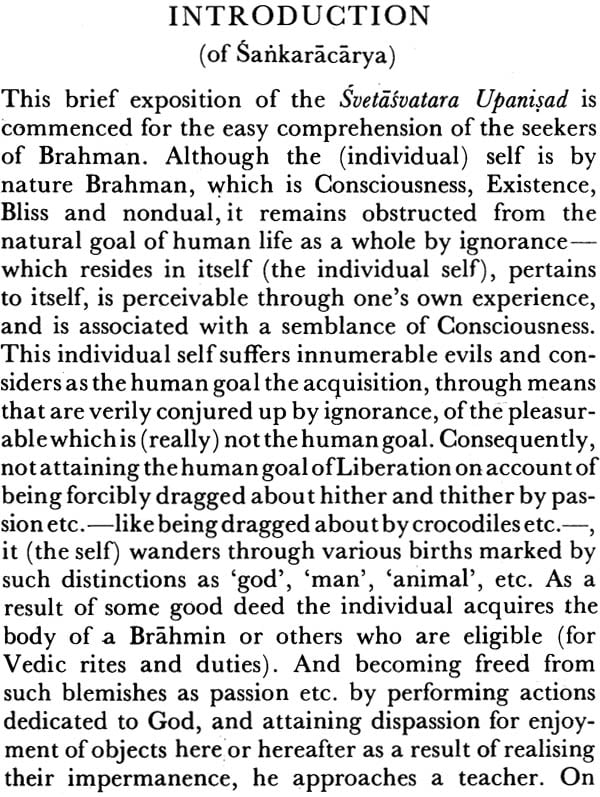
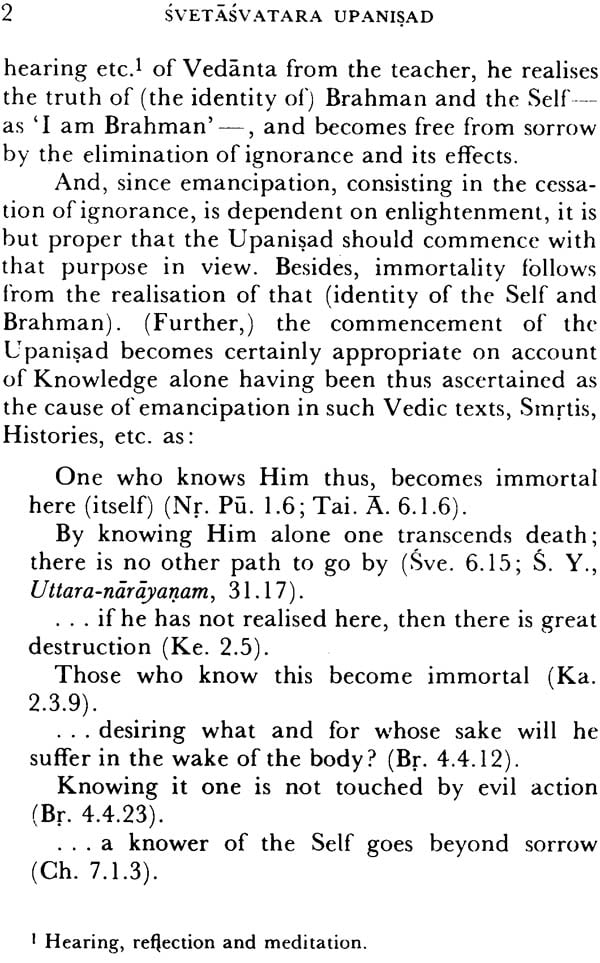
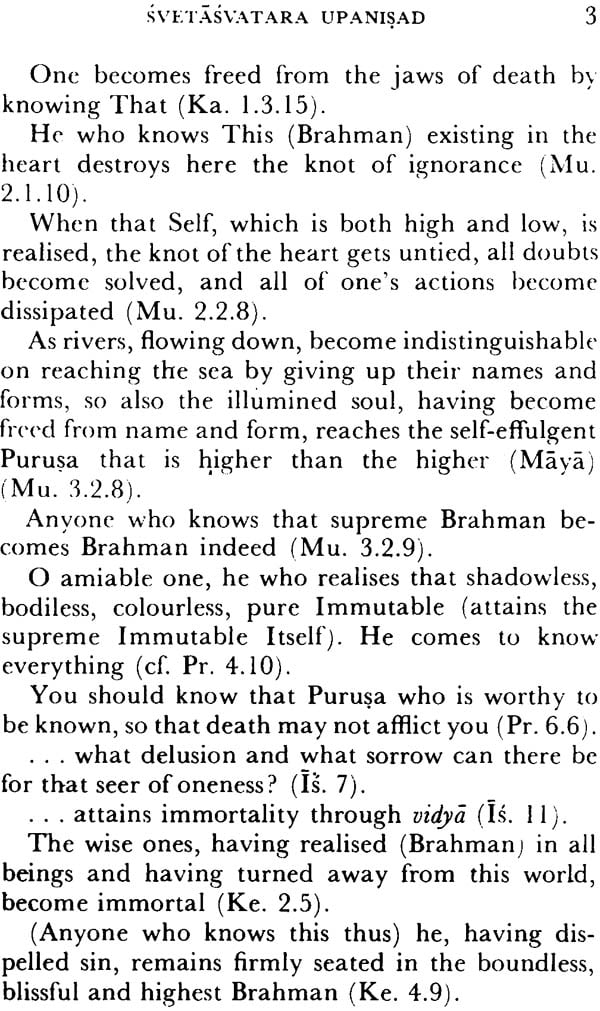
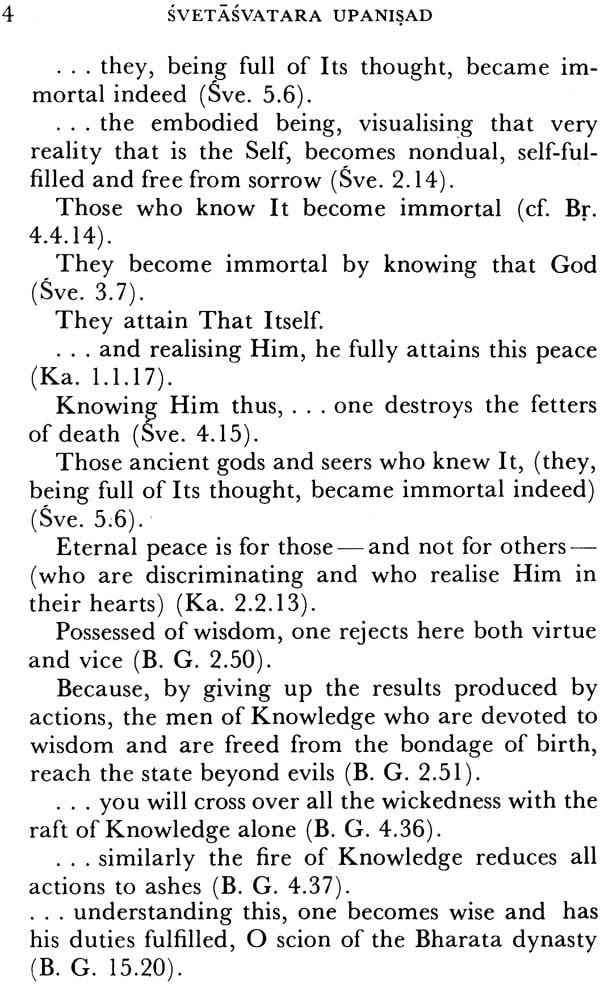
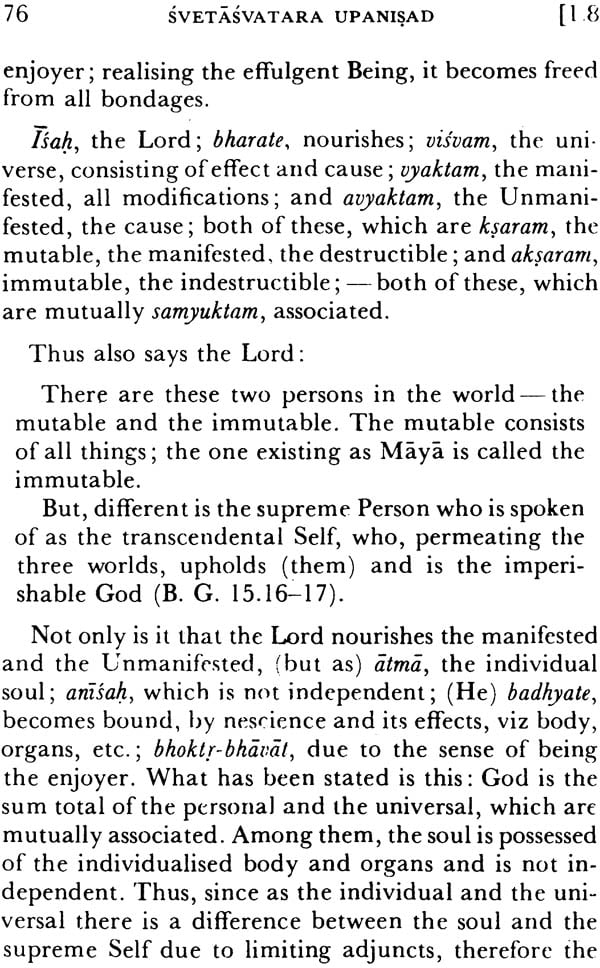
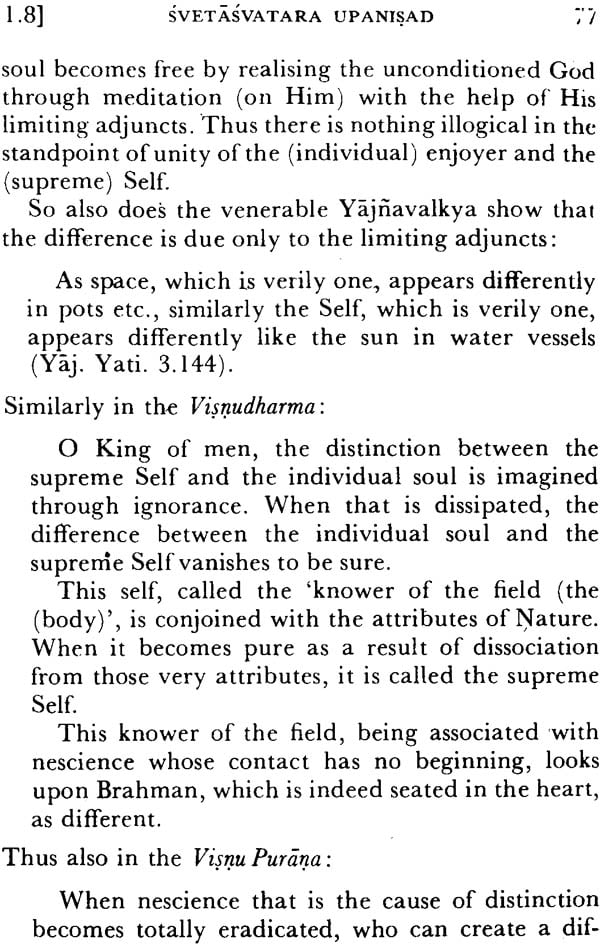
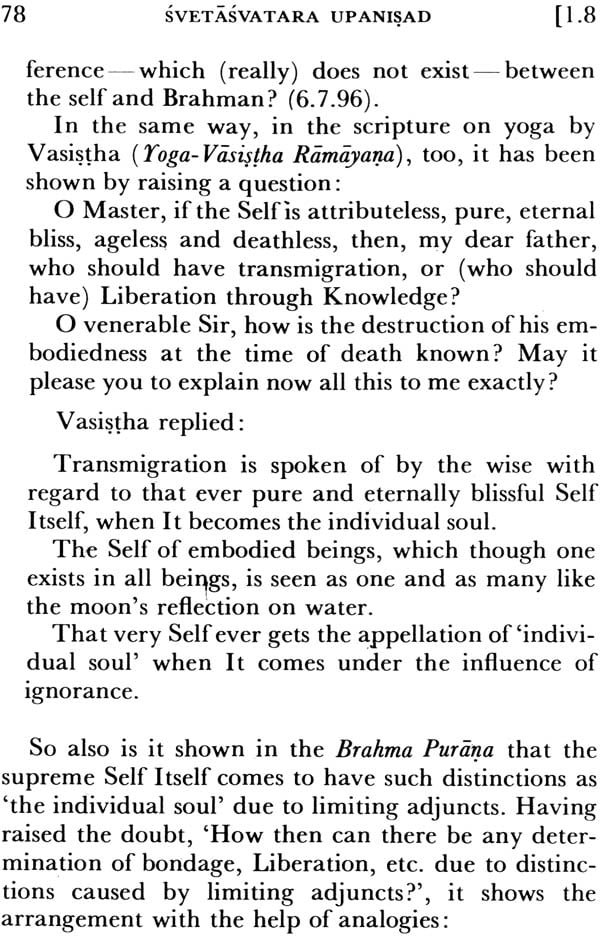
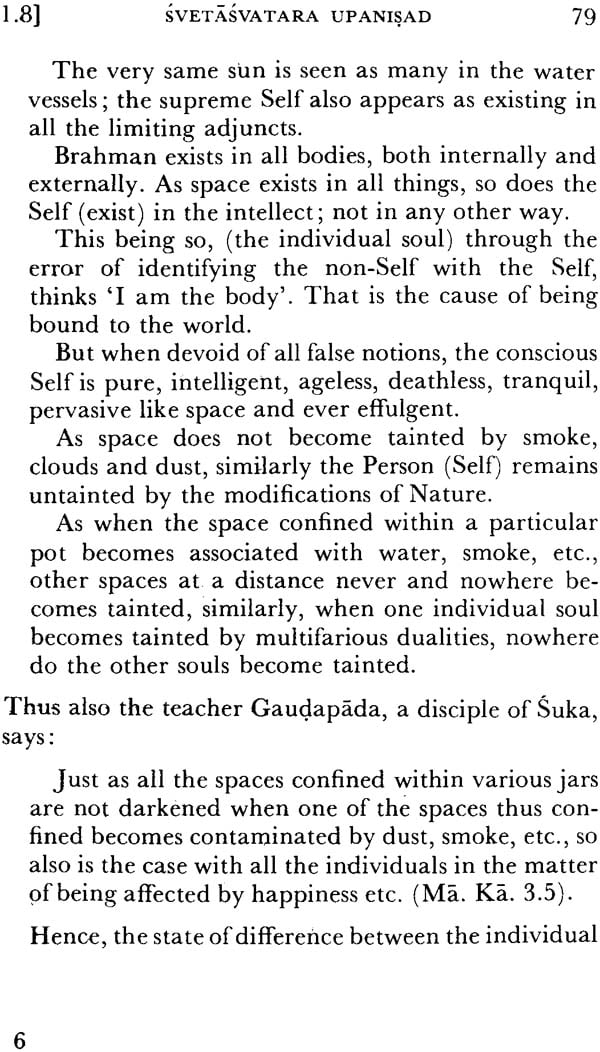
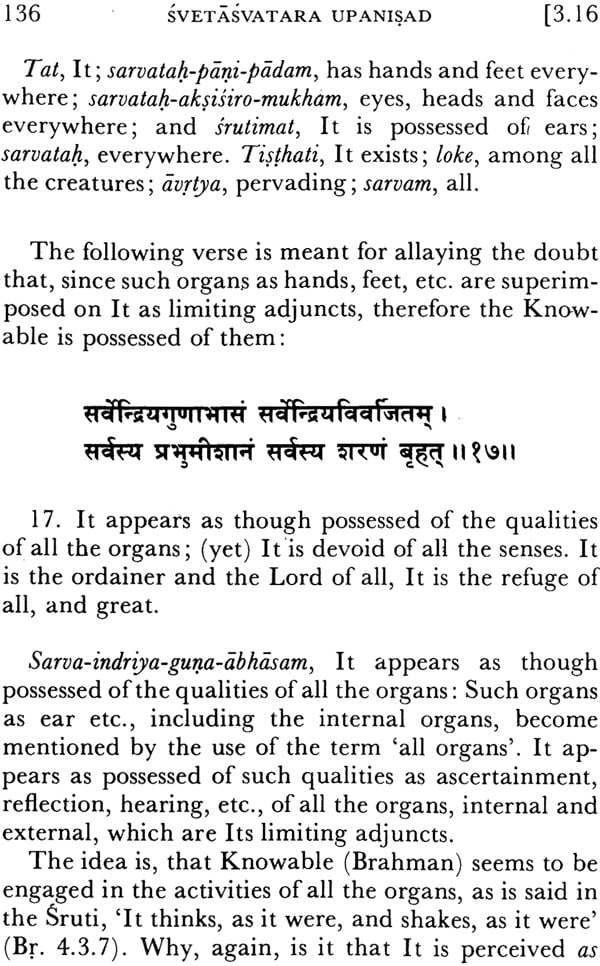
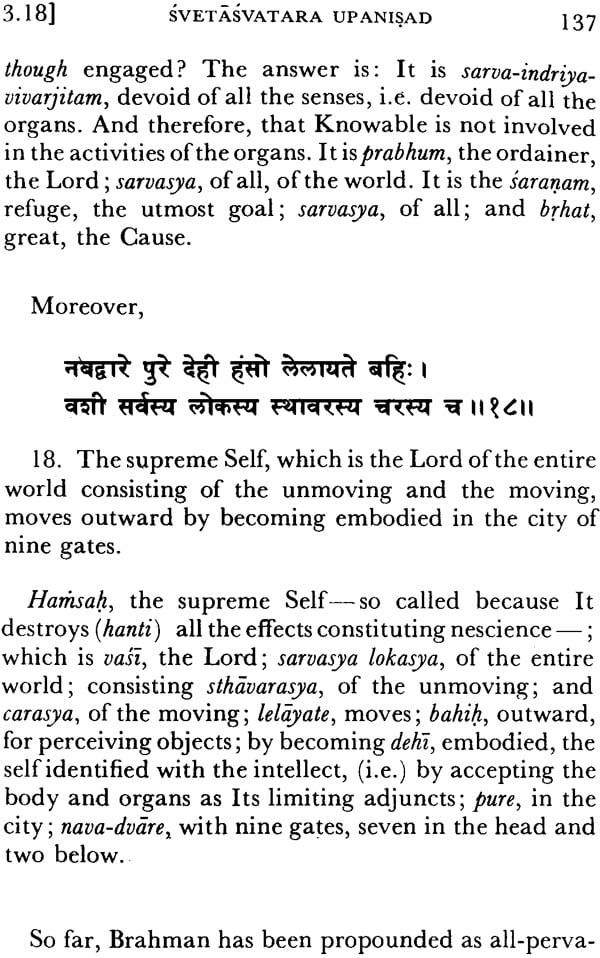
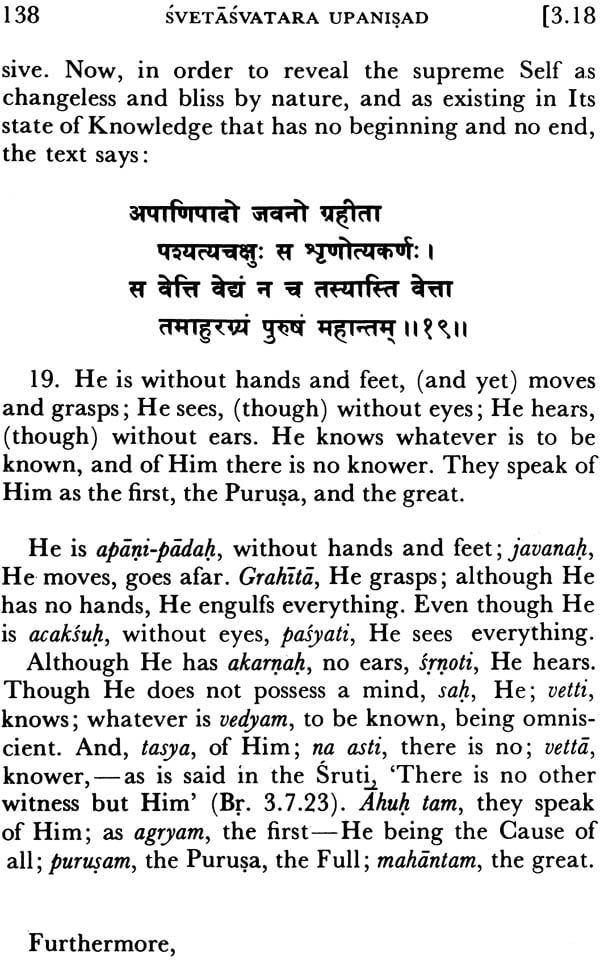
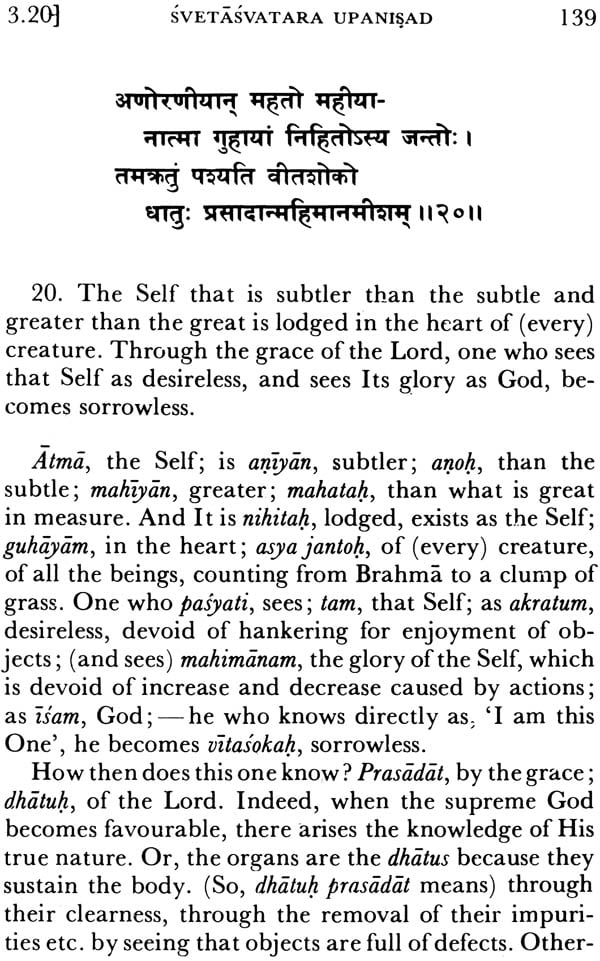
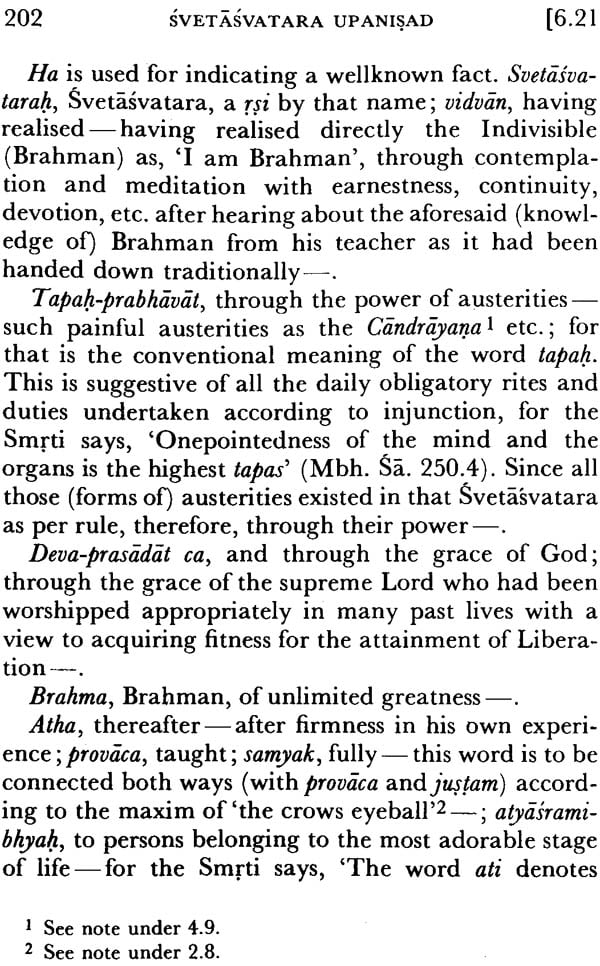
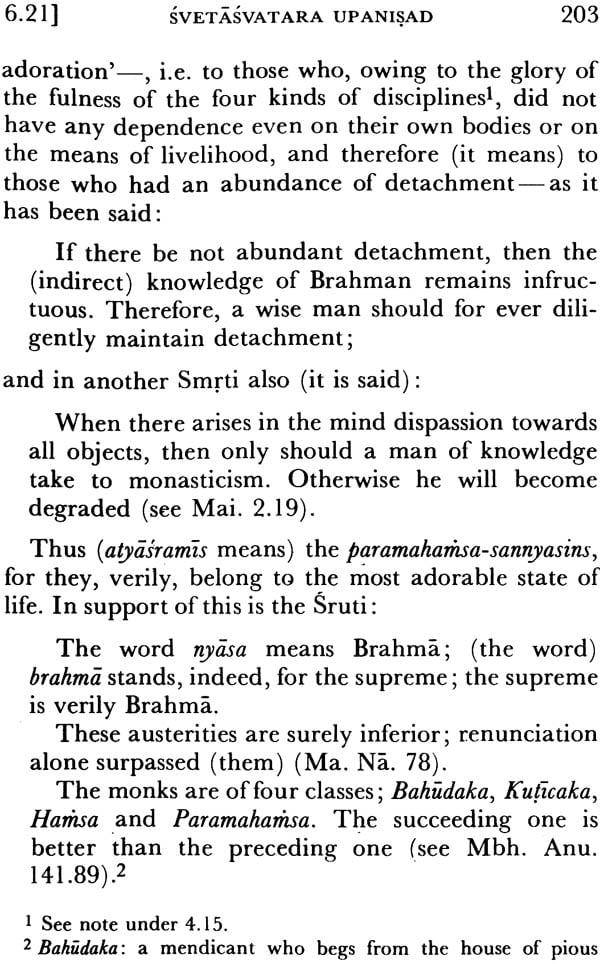
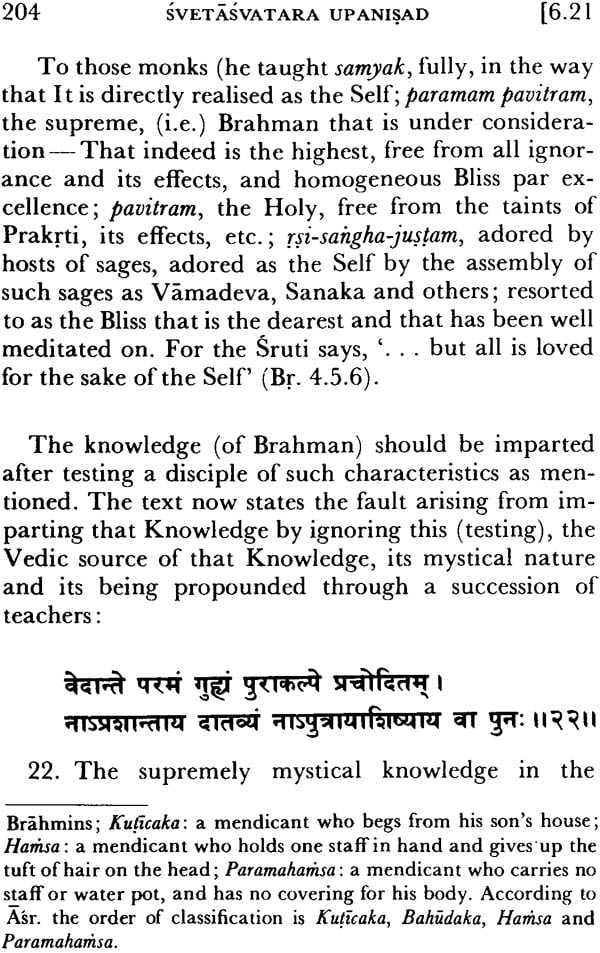
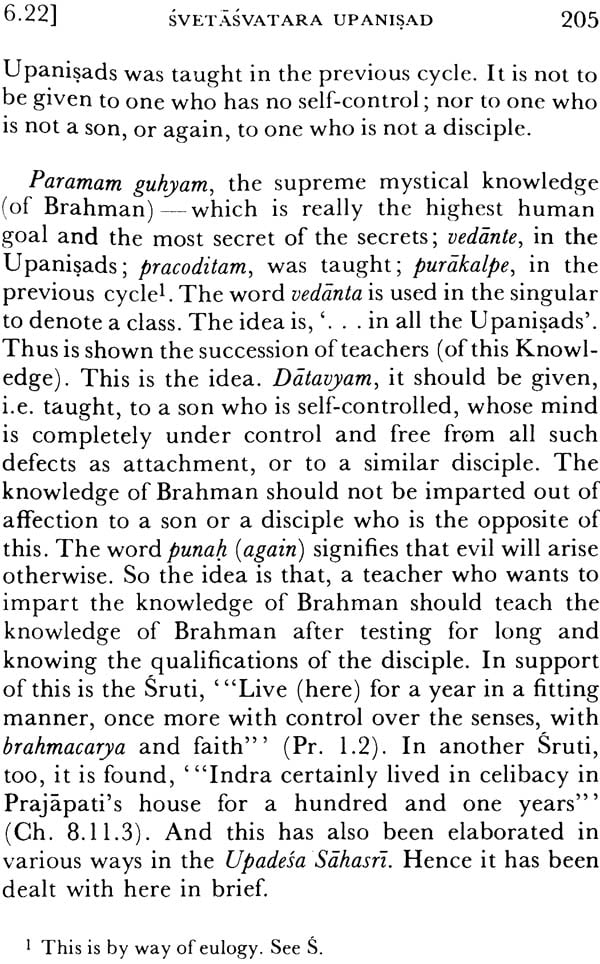
Of Related Interest:
Life of Shankaracharya - The Adventures of a Poet Philosopher
Click Here for an Exhaustive Collection of Books Relating to Shankaracharya





